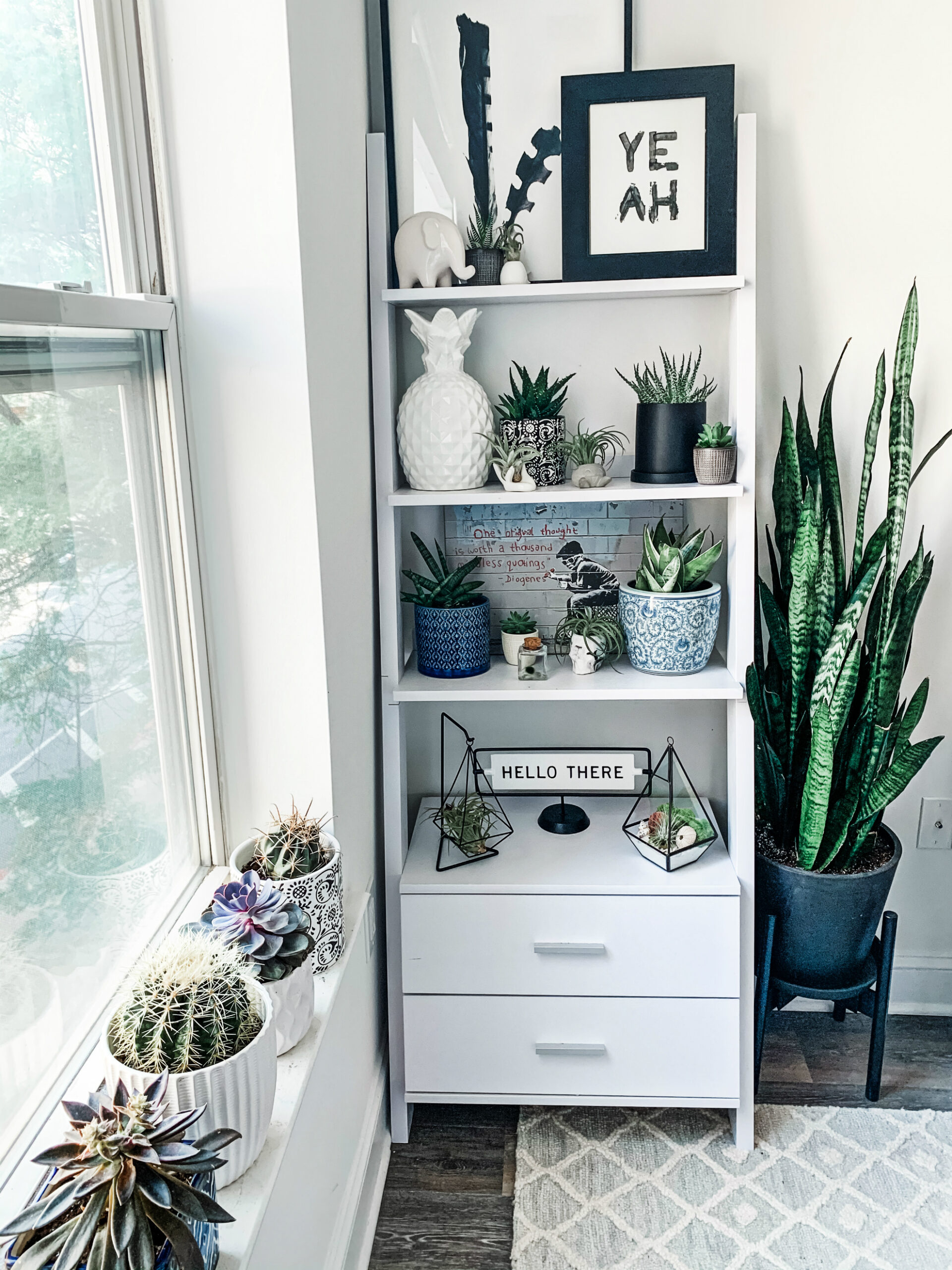
I got a message from a reader the other week asking if I wouldn’t mind sharing any succulent care tips I have on the blog. Not gonna lie, the overwhelming support I’ve gotten since posting more plant content has been so uplifting for me during these hard 4 months. Plants truly make the world a better place, or at least have been working as fantastic therapy for some of us (ahem, me.) So thank you for allowing me to continue sharing what has given me so much joy, considering I’m not a plant blogger lol. I think it’s too late to turn the blog in that direction full-time (+ I like posting my other content categories as well) but this definitely counts towards the Lifestyle section.
If you’re really into plants now because of the Quarantine, please check out my Beginner’s Guide to Plant Parenthood. There’s a ton of information I’ve included that will help you transition from first time plant owner to a self-made professional green thumb in no time; even those of you who claim to kill every plant you bring into the house, you won’t anymore after reading this post.
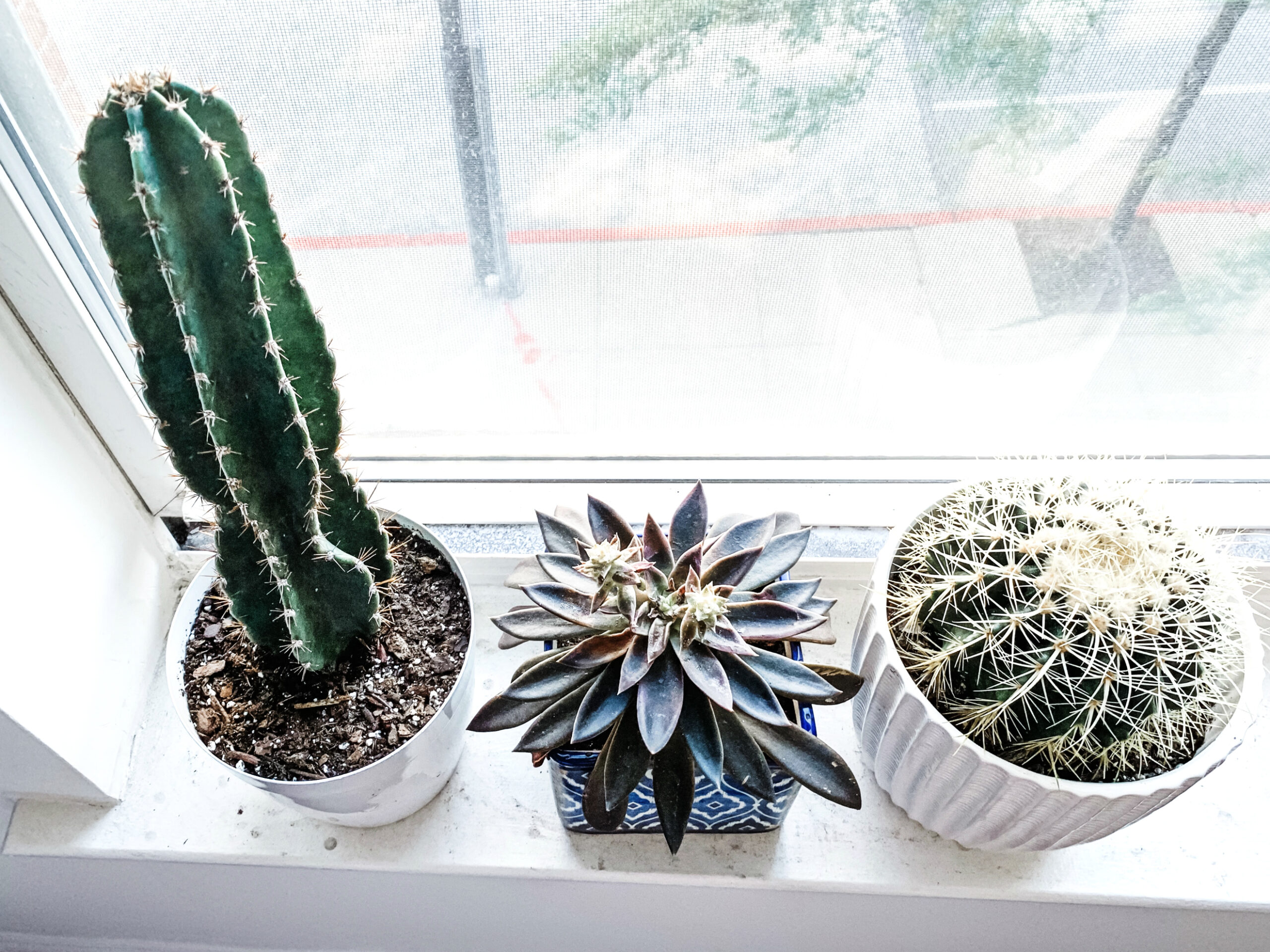
CACTUS CARE TIPS
—
To be honest, I was totally afraid to start growing cacti because I have a tendency to give my plants more water than suggested. In the past, I completely drowned those tiny cactus plants you get at a grocery store and it totally scarred me from pursuing the variety. But then Thomas expressed interest in getting one, which naturally triggered me because ANY interest he shows in plants is exciting. So here we are 5 cacti later and guess what, they’re all still here!
When it comes to cactus plants, there’s not much of a difference in terms of care strategies from standard succulents. But there are a few things to take note of if you want to guarantee your success in growing these desert dudes. First being the amount of sunlight they receive, which (spoiler alert) is A LOT, second concerning the amount of water to give them & at what frequency, and third focusing on the type of soil you pot them in – yes, it’s different and necessary to take note of if you want them to survive.
MORE SUNLIGHT, THE BETTER
Cacti thrive in direct, blazing sunlight. If you think about it, the desert provides little to no shade and extreme temps on both sides of the spectrum from day to night. So naturally, they’ll do best in the brightest, hottest (or coldest) window in your home. Let’s just say I’ve put ours in our brightest window of the apartment and they’re loving it, as opposed to the other plants that ask for bright, indirect sun and end up getting sunburnt through the window. Let the cacti take one for the team and block those direct rays for your other plant varieties needing sun but just not as much.
WATER LIGHTLY EVERY 2 WEEKS
I’ve heard many different watering techniques when it comes to cactus plants. Some say leave them alone for an entire month and then douse them in a bucket amount of water. Others say water the same amount you give your thirstier plants, just every other week. And some say ignore them entirely aka no water until month 2 or something… Can you see why I was afraid to get a cactus? There’s so much confusion surrounding what amount of water will make or break your plant! But no sweat, because I think I got the system down for mine.
What I’ve found to work best for my 5 cacti is the happy medium of watering every 2 weeks and providing up to 1/4 cup of water per 6″ pot (slightly less water if the pot is smaller.) If there’s anything these plants thrive on, it’s making the most of a scarce amount. Think back to how desert weather behaves – it probably rains 1-2x a month and not in bucket amounts. So plunging a cactus into the sink and running the water through the roots might as well be the same as throwing it into the ocean during the winter – aka a complete shock to the plant. Watering it the same amount as your other plants is too much water at a time, even if its spaced out 2 weeks. And if you ignore it all together, well that’s just silly. All plants, no matter the variety, need water in order to grow.
So at the end of the day, you’re better off giving it a little bit in consistent intervals bi-weekly – less will always be more to these guys. Also make sure you have a needle nose watering can that can help you get water to the soil below those prickly areas of the cactus from a safe distance. I actually recommend only using a watering can like this one for all your plants in general, as the needle nose allows for easier access to those hard-to-reach areas / less spillage all together.
REPOT USING CACTUS SOIL
Yes, there’s a whole different type of soil you need to use if you want to give your cactus & succulent plants a fighting chance. Personally, I didn’t know this myself until I came across an article explaining the importance of nutrients found in this specific type of soil. I mean it makes sense entirely, like the diet of two different species of animals (i.e. a lizard vs a bear.) A lizard can thrive on insects alone but a bear needs a more robust assortment of nutrients in order to survive. Weird analogy I came up with here but hopefully you get the point lol.
I highly recommend Espoma Organic Cactus Mix Soil, as I use the regular Espoma Organic Potting Soil for all my other plants and they’ve done nothing but THRIVE. I talk about the importance of organic soil vs any other potting mix in this post here if you want to know why, but ultimately it’s like having the choice between processed and organic food for yourself. Which would you rather?
Andddd I also suggest you get yourself a pair of heavy-duty gardening gloves if you’re planning to repot anything with needles. This pair I got is definitely designed for outdoor projects like rose bush trimming, but they’re the only pair of gloves I’ve worn where I don’t feel the needles poking through. These are your best bet in terms of defense, especially if you have some larger cactus plants; I wouldn’t get anything wimpy.
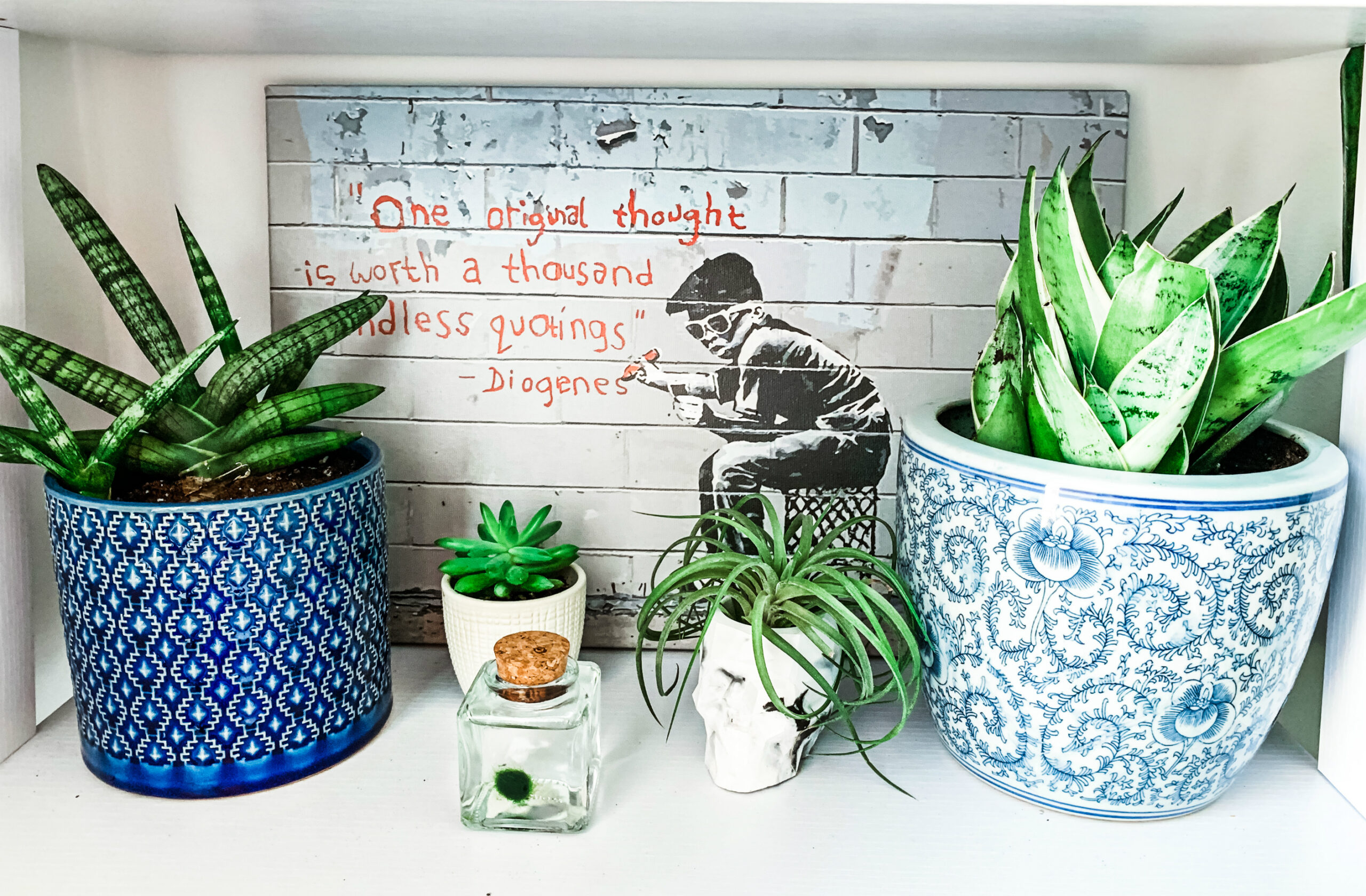
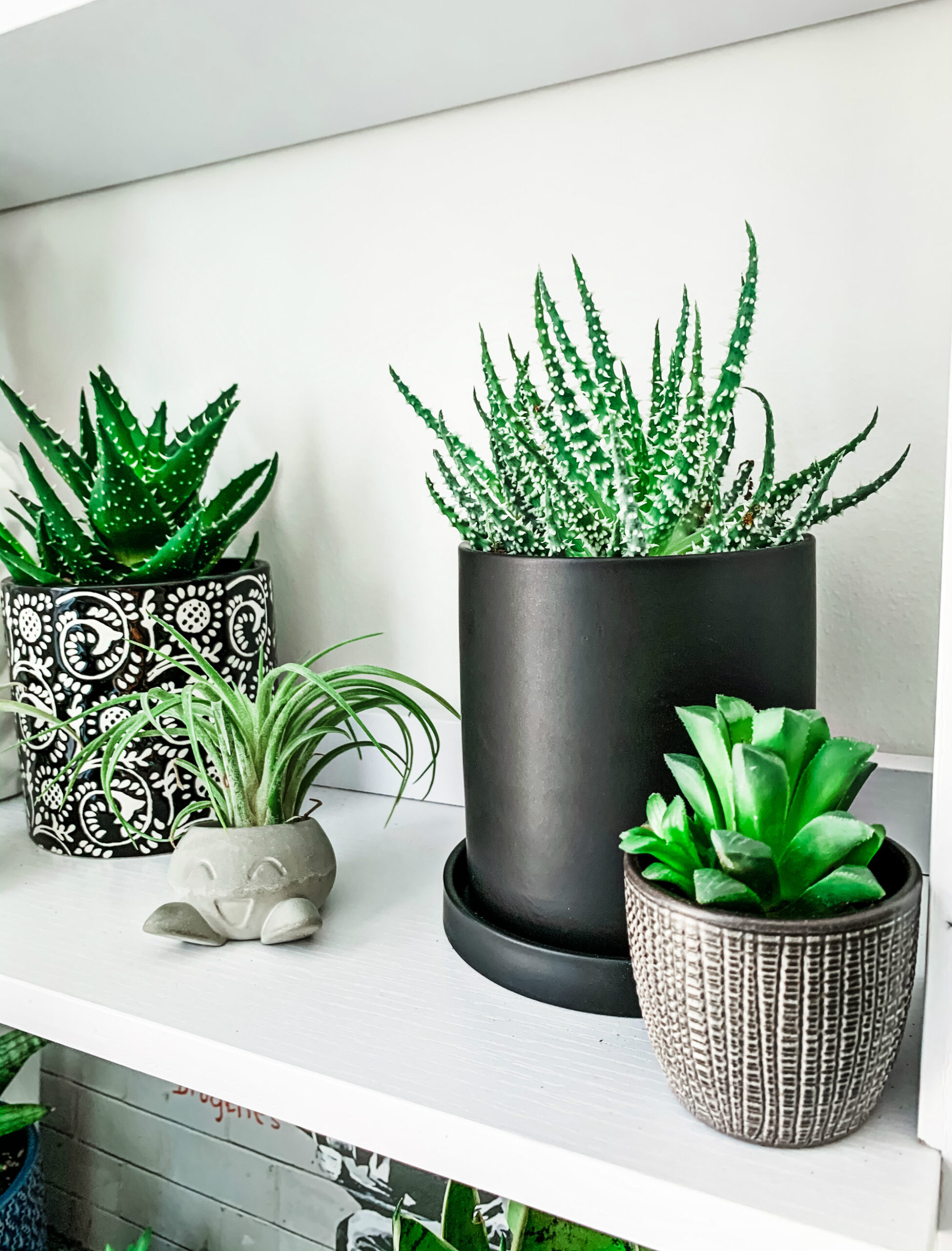
SUCCULENT CARE TIPS
—
When it comes to succulents, they’re very similar to cactus plants. You should water them the same (1/4 cup water per 6″ pot every 2 weeks, less water if smaller pot) and you should also repot them using the Cactus soil, as they need those same nutrients in order to thrive. The only difference is that they don’t need a crazy amount of sun in order to be happy. Yes, they need sunlight but you don’t have to keep them in the window if you don’t want to. As long as they get a decent amount of indirect sun, by reflection off a window even, they’ll be fine.
HOWEVER, THERE ARE SOME EXCEPTIONS..
I’ve unfortunately learned that not all succulents like water the same as others. In fact, there are some succulents that will completely revolt if you even think about giving them the same drink as you did your Aloe plant. Thankfully, the ones who have an issue happen to look sort of the same in appearance (tougher, hardier leaves) which makes it a little easier to determine who you should actually ignore until the last day of the month.
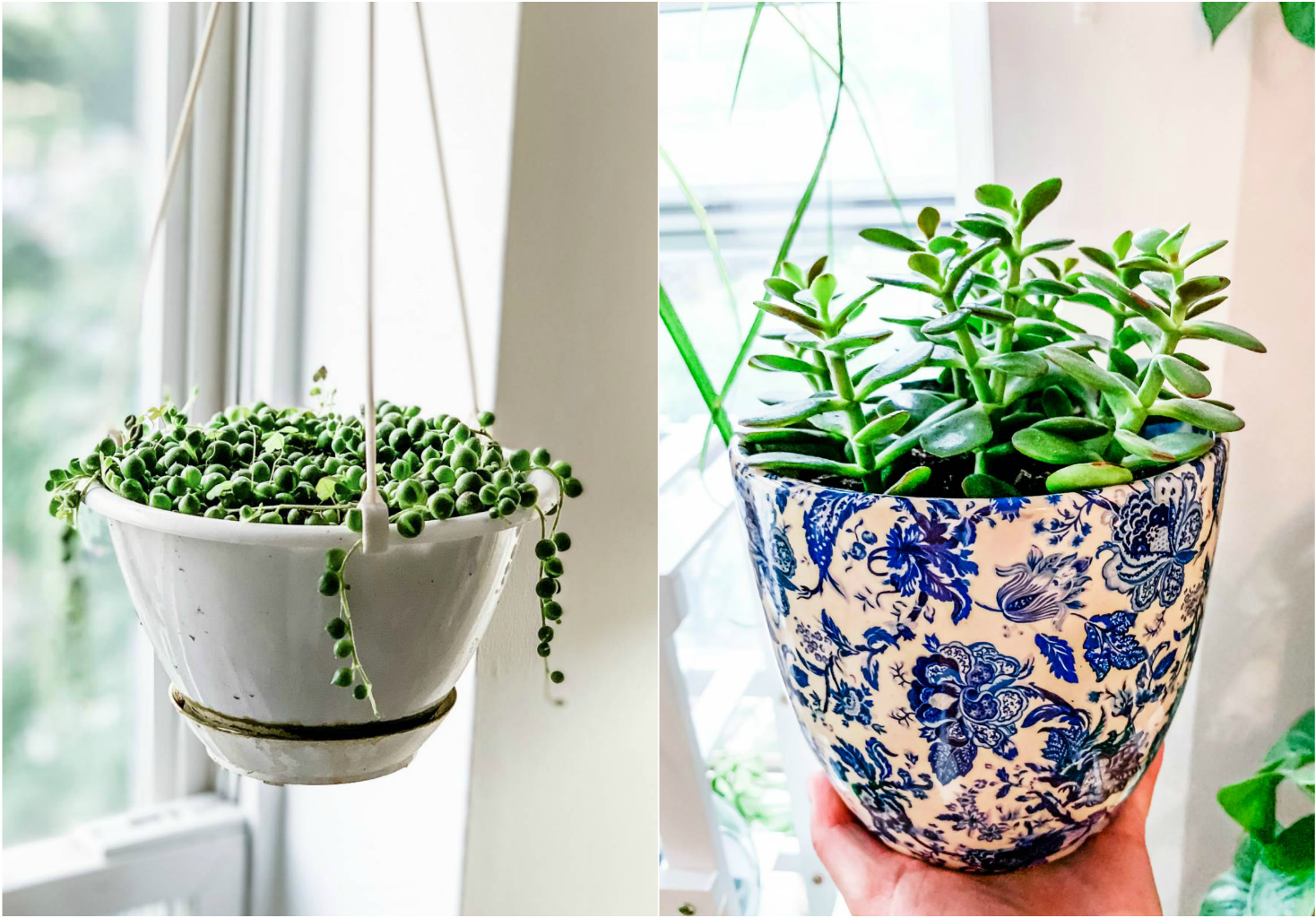
Here are the ones that actually do well with drought conditions & actually prefer to be near a sunny window, from my experience:
STRING OF PEARLS
JADE PLANT
OGRE’S EAR (not pictured)
I’m sure there’s many others that classify similarly to these plants; these are just the one’s I’ve owned. Always be sure to research the plant you take home, or before you get it if you can, so you can be best prepared for what its needs are.
When that one and only time comes to water them, give the bare minimum. Don’t be generous, don’t be kind, don’t even try. Give them the amount of an accidental spill. Trust me.
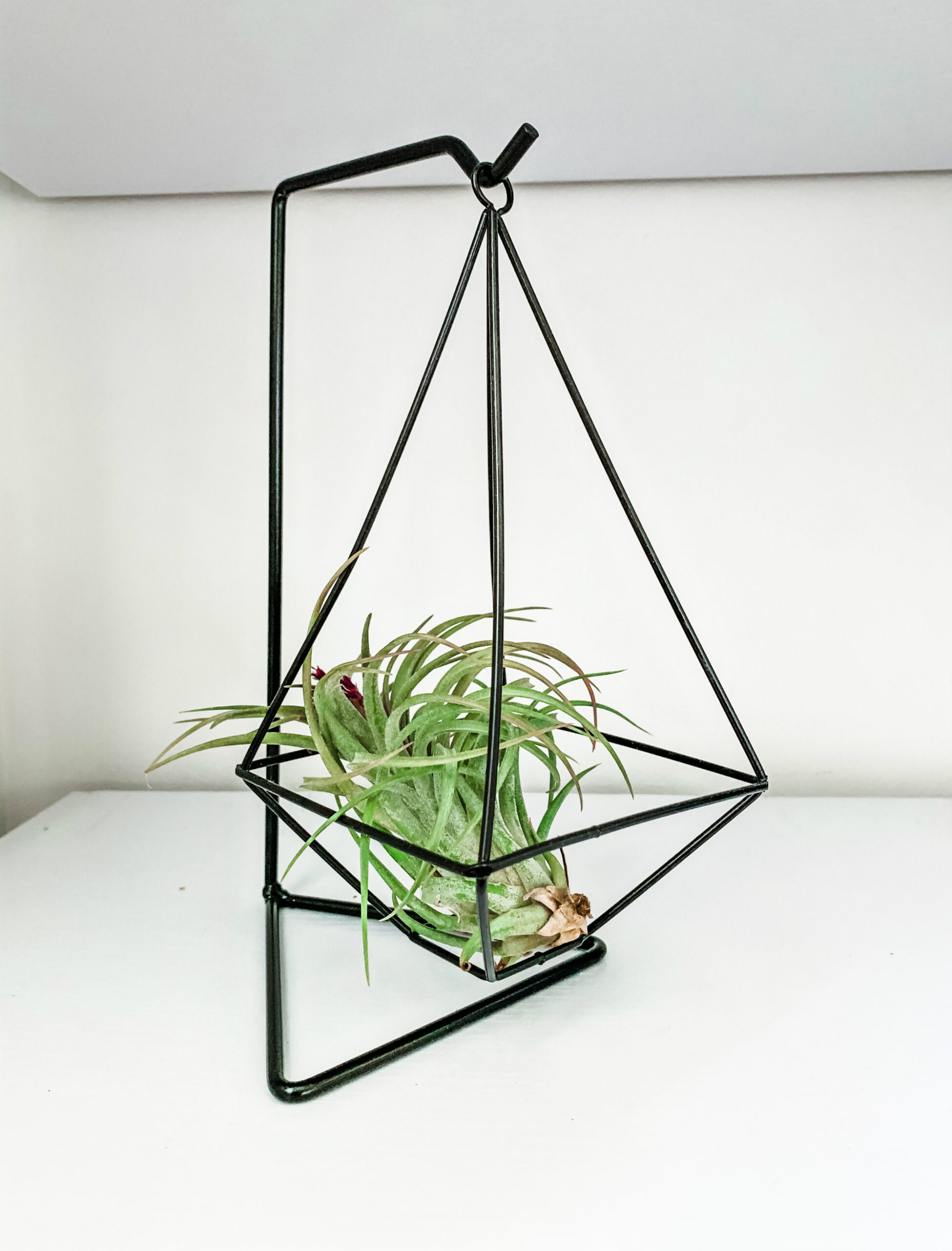
AIR PLANT CARE TIPS
—
While air plants count as succulents, they’re clearly a totally different variety of plant. For starters, they don’t need to be placed in soil in order to survive. They’re called “Air Plants” because of the fact that they get all their nutrients and water from the moisture in the air. Kind of crazy but super cool. I’ve also learned more about air plants as I’ve started expanding my collection of them. I had no idea they actually do a great job of removing pollen in the air, which I don’t think other air-purifying plants are able to do. And did you know that an air plant will only bloom ONE TIME in its lifetime? I recently witnessed one of mine blooming for the first and last time at the beginning of Quarantine and little did I realize it would be a short-lived moment.
Although they’re relatively low-maintenance to care for, there are a few things you should keep in mind should you want to keep your air plants happy & well, alive..if I’m being blunt.
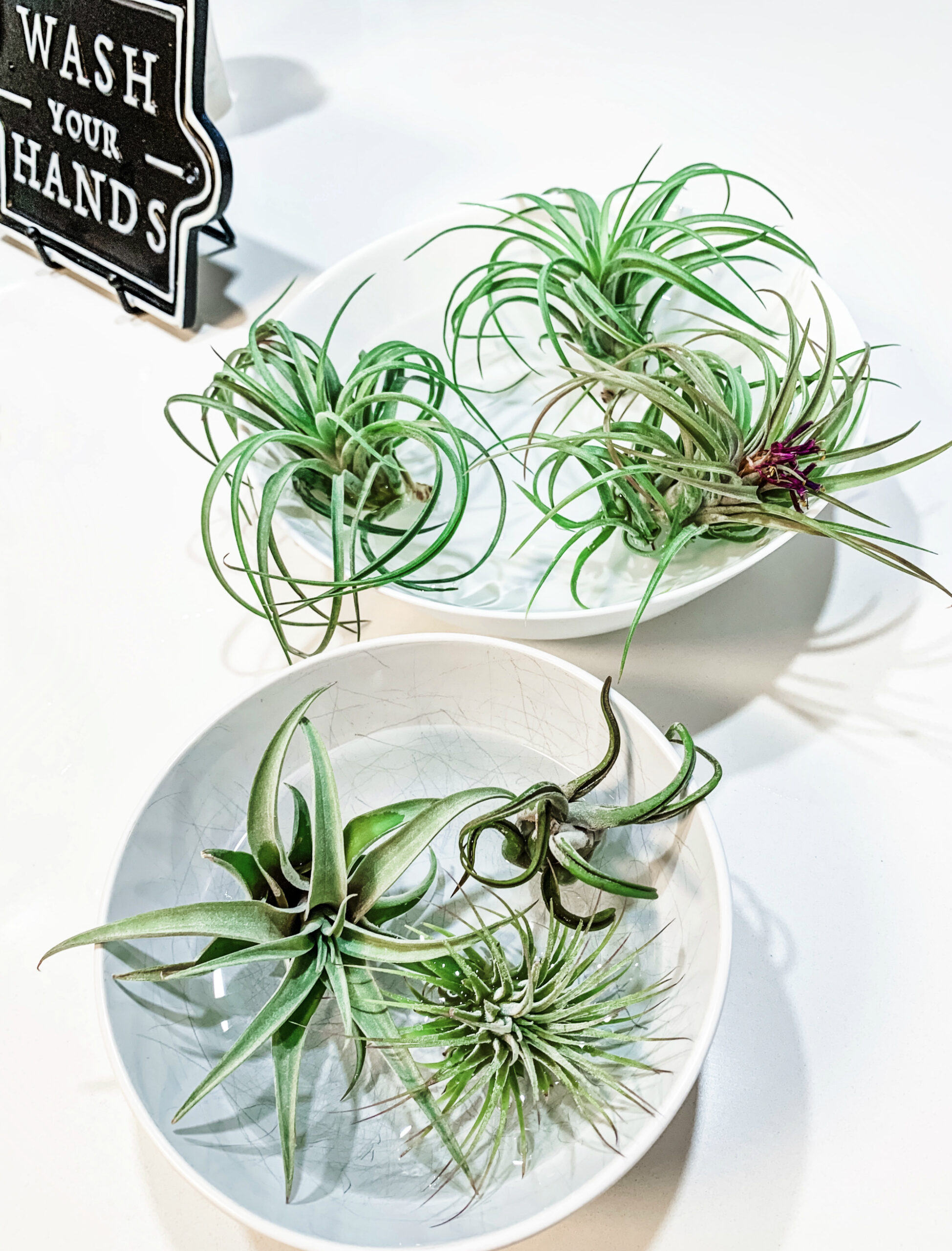
DO NOT PLACE IN A SUNNY WINDOW
Air plants require bright, indirect / filtered light. If you put them in the window, they will shrivel up and die. If you have a place where light is reflected off a building and reaches them, then that’s the best spot you can give them. For us, it’s our standing ladder shelf that’s tucked in the corner of our bedroom facing the window.
SUBMERGE IN WATER FOR 20 MIN WEEKLY
When you’re watering the rest of your non-cactus & succulent crew (unless it’s week 2 for them), fill a bowl up with filtered water (I explain the importance of that in this post as well) and set a timer for 20 minutes. I call this moment “hot tub party” considering how they all look chilling in the bowl(s). You don’t have to submerge the whole plant in the water, just as long as the root/stem is under water.
DISPLAY IN LOCATION WITH AIR CIRCULATION
Air circulation is vital for the plant to be able to dry off in-between hot tub parties and also helps prevent disease. Our ladder bookcase happens to be right near the AC vent in the ceiling, which provides frequent air circulation these days. But during the times we have the AC off, opening the nearby window gets the job done as well. The trick is avoiding having any sort of dry, still air for long periods of time which can happen frequently in small apartment bedrooms.
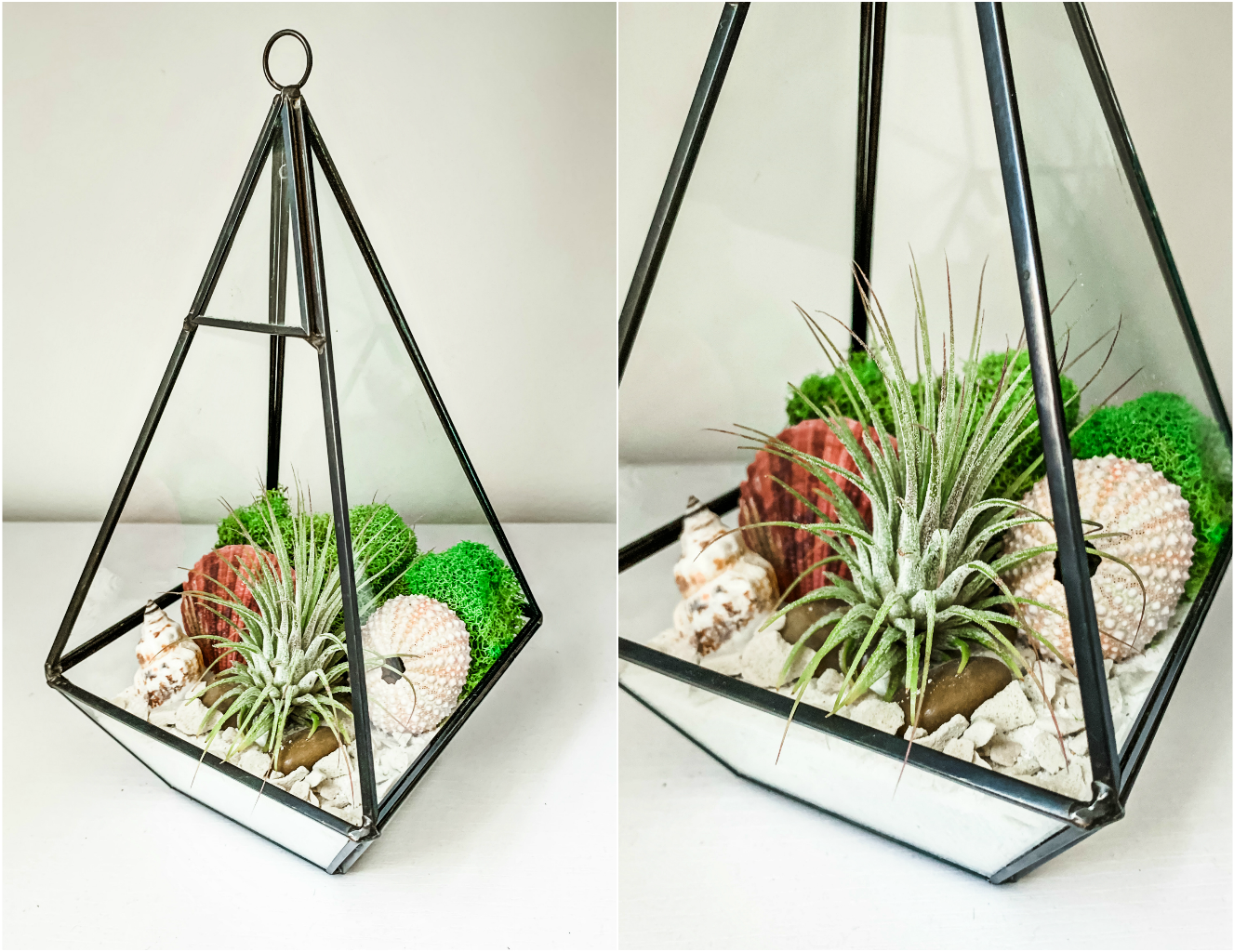
While on the topic of displays, you can display an air plant in pretty much every which way. I’ve found some adorable Etsy shops that hold most of my air plants currently as you see above, all of which can be found listed in this post. Other displays are from local garden boutiques like the above terrarium. What I love about this air plant display from Bella’s Bloom is the unique modern approach to represent a nature environment. I never thought to include air plants in terrariums, let alone knew terrariums could actually look great in something other than a clear fishbowl.
…
Side Note >> I should mention that Bella’s Bloom is a small, local boutique flower shop in Jersey City, NJ that’s giving back in a BIG way during this global climate. They are currently donating 2+ masks to charitable organizations fighting COVID-19 for every 1 mask sold online! This includes organizations that are involved in peaceful protests, which need masks in order to help prevent the spread of the virus while in larger groups. I have one of their masks and let me tell you, it’s SO NICE. All masks are made from 2 layers of soft & breathable antimicrobial fabric, are lightweight yet durable, machine-washable + reusable, and an overall delight to wear compared to the other cloth ones I’ve worn (& suffocated in) before this one. Masks aren’t going away anytime soon, as they’re deemed required to be worn while shopping or within indoor settings open to the public in general (i.e. retail stores.) I won’t be surprised if we’re wearing them for the rest of the year, or at least until we get a vaccine…which will be in a year. Might as well get yourself a nicer quality mask you won’t dread putting on & wearing, and it might as well be one that helps towards a good cause!
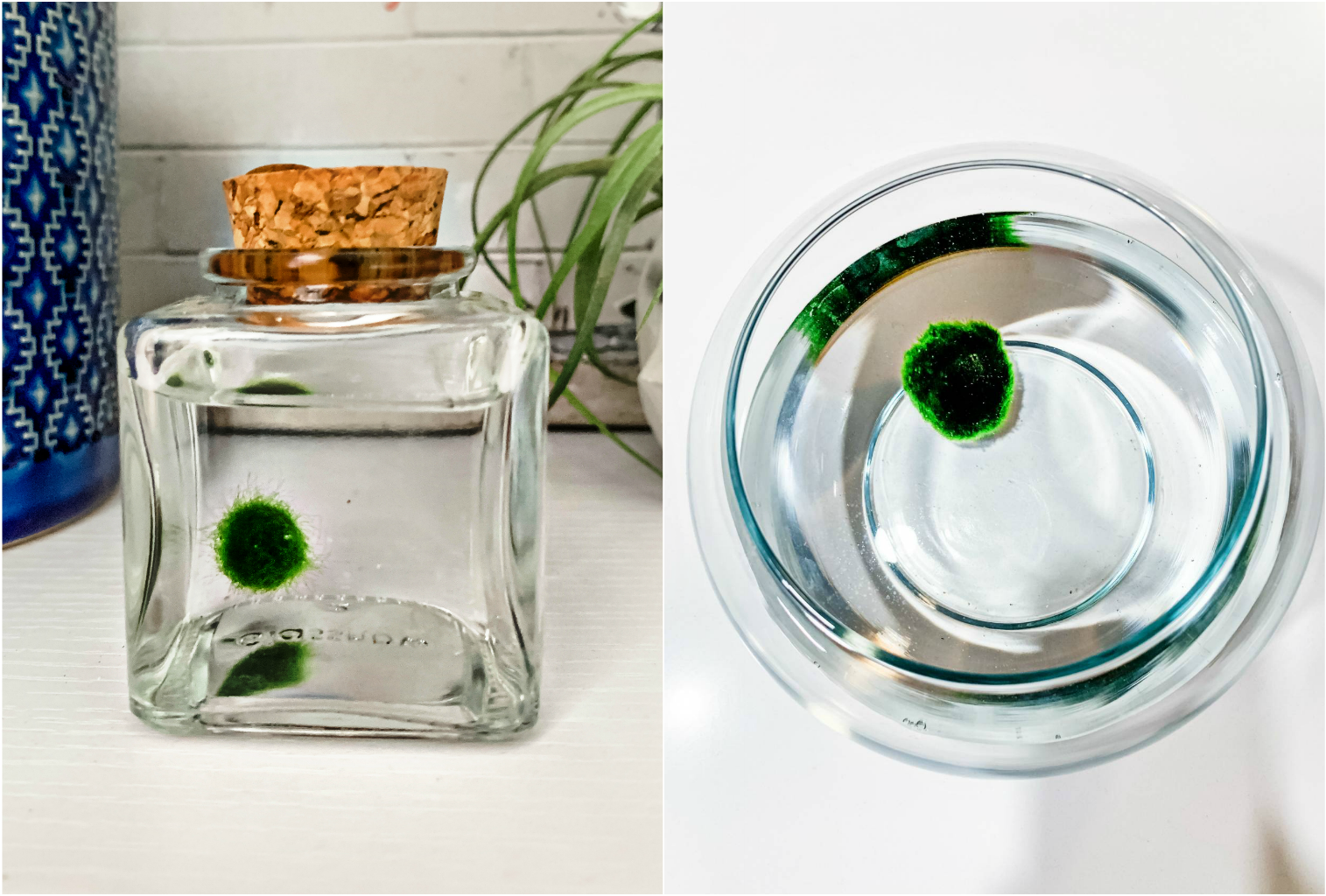
If you’re still looking for the most low, LOW-maintenance plant imaginable,
believe it or not there’s one that qualifies…
THE MARIMO MOSS BALL
—
I had no idea these aquatic green balls of algae existed until Thomas told me he wanted one. At first glance, I didn’t understand the attraction or thrill of owning one (or two..) but I didn’t want to deter his rare interest in getting any sort of plant, no matter how “strange” it is. In the short 2 months we’ve had them, I already appreciate them more than I’d thought I would. They require zero attention from me other than changing out the water, which I do every 2 weeks. So that’s very nice to have one less plant needing me on a weekly basis.
What I’ve learned about the Marimo Moss Ball has actually been quite intriguing. They’re actually not related to moss at all, but instead a rare growth form of algae that’s velvety to the touch (like how moss feels) which originate in the lakes of Japan & Northern Europe. The growth rate of a Marimo is only up to 5mm a year, which means the one pictured in the fish bowl above might be 7-10 years old. I read somewhere that they can live up to be 200! Sadly, populations of Marimo are starting to declining in nature due to an increases in agriculture and fish farming in Japan & Northern Europe, which are the two places in the world these balls of curiosity can be found in the wild. Don’t worry, my Marimo Balls came from a nursery from a colony that’s only ever been grown in captivity, in case you were concerned or wondering. They’re not expensive to buy at the moment, but I won’t be surprised if that changes over time.
I’ll finish this post with these awesome plant IG accounts I came across this week that I recommend checking out / giving a follow!
@lammylala
@plantmanp
@thequeer_jungalow
@blackgirlgreenworld
@soulsistaplants
@junglecae
@plantkween
@eargardn
@zznelsonzz
Have a great weekend friends!


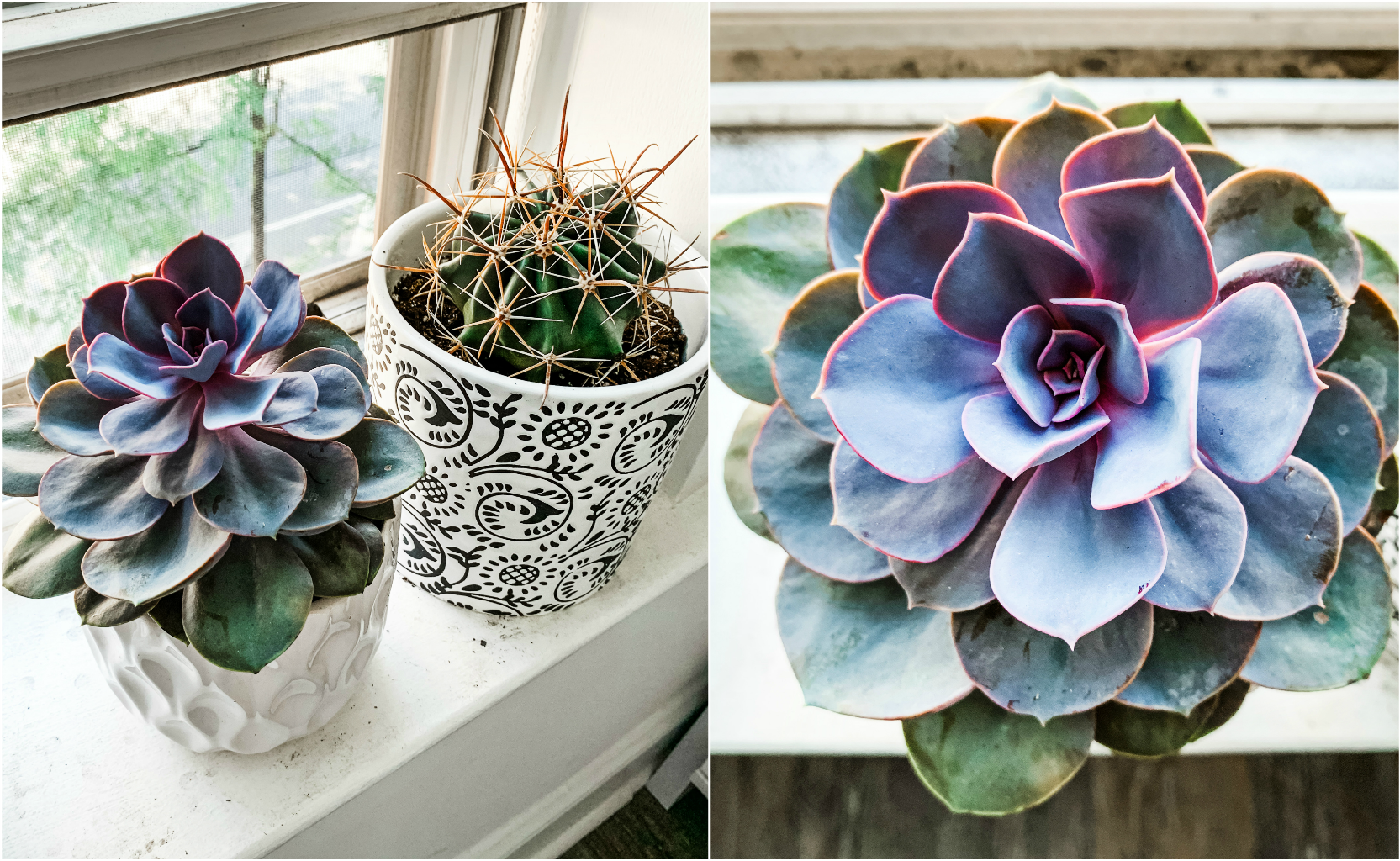

Oh wow, this was such an interesting post, thank you! I have killed a few cacti in my time and it’s totally put me off but I might give them another go, they’re so beautiful! And air plants – I honestly had no idea! Thanks again and happy Friday!
Thank you so much Katerina!! xx
Love these ideas! I don’t have a green thumb so this is very helpful!
Thank you babe! xx
This is EXACTLY the post I needed :). I can’t keep a succulent alive OR a cactus! Crazy, I know haha
Thanks for sharing! Definitely using these tips!
xo,
Kristie
http://www.kristieincarolina.com
I had no idea about any of these tips and it’s definitely why my succulents are brown and dying – which is so sad because succulents are my FAVORITE! Thank you for these helpful tips this makes me eager to go buy more and try this out!
Xx,
Good to know! Your plants are so pretty.
Tilden, I love that you have found therapeutic benefit in your plant parenting! What an amazing thing and how awesome that you have received so much wonderful feedback. Your succulents are absolutely beautiful and healing to just view the pretty photos of them. Thanks so much for sharing and linking up with me.
Shelbee
http://www.shelbeeontheedge.com
And I forgot to mention…I love Marimo Moss Balls! I have 4 of them! They are the only plant that I have ever managed to keep alive!
Shelbee
http://www.shelbeeontheedge.com
And I don’t know if you know this, but you can pull the algae balls apart and reshape them into a ball if you want separate ones. They will continue to grow after breaking them apart. I started with two and as they have grown, I have broken them into 4 separate ones.
P.S. Sorry for all the comments! I got on a roll!
Shelbee
http://www.shelbeeontheedge.com